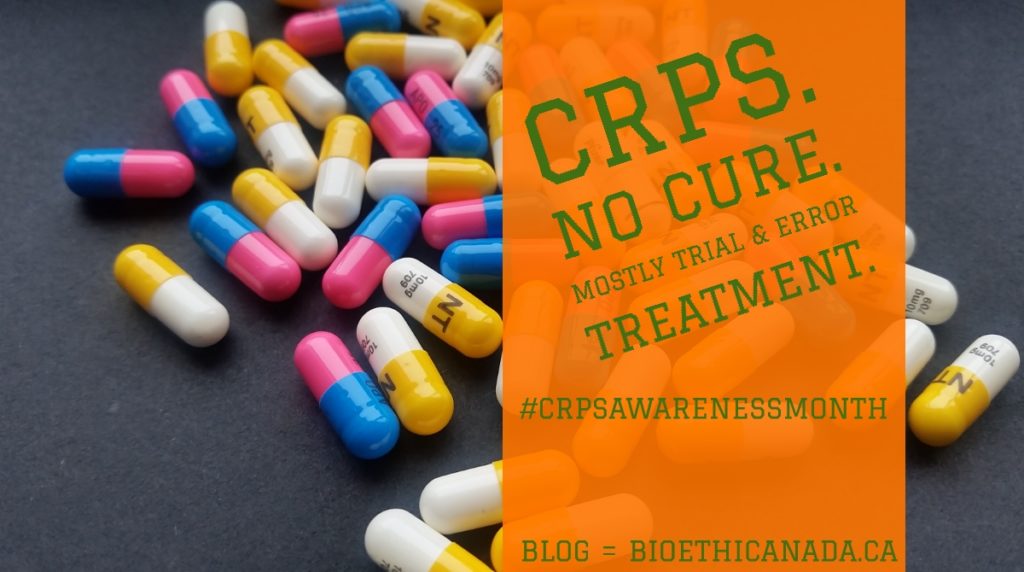While prescription painkillers once drove the nation’s overdose epidemic, they were supplanted first by heroin and then by fentanyl, a dangerously powerful opioid, in recent years.” (1)
Unfortunately, though, when people hear about the “opioid epidemic” (2) – in the news, in politics, in public health, or elsewhere – that distinction isn’t being made. We’re being left with the incorrect impression that the current overdose epidemic is the result of prescription opioid medications, but these deaths are the result of the non-prescription drugs heroin and fentanyl.
Today I read a news article with the headline “Why Aren’t we Talking About the Opioid Epidemic?” (3), and I decided to write to the journalist who had written it. This is what I wrote (and yes, the author replied):
Please, please, please… stop calling this an “Opioid crisis” or an “Opioid epidemic”. It’s an “overdose epidemic”, driven primarily by fentanyl, while the word “opioid” encompasses prescription medications for cancer pain, palliative care, and severe chronic pain conditions.
These are my research-backed views, as a bioethics professional who has been living with Complex Regional Pain Syndrome (CRPS; formerly known as Reflex Sympathetic Dystrophy or RSD):
Calling this catastrophic issue an “opioid” *anything* stigmatizes chronic pain patients who have legitimate prescriptions for pharmaceutical opioid medications to deal with conditions like cancer pain, trigeminal neuralgia, Complex Regional Pain Syndrome, and Multiple Sclerosis. FYI, “Canada leads the world with one of the highest rates of multiple sclerosis (MS)”. (mssociety.ca)
What has been happening as a result of calling this an “opioid epidemic” is that people with high-impact (constant & severe) chronic pain who have been on stable (unchanged) dosages of prescription opioid medications for years – sometimes even decades – have had their prescriptions lowered or revoked for non-therapeutic (i.e. non-medical) reasons.
People with excruciating pain conditions have become political pawns in an anti-opioid crusade by politicians – despite the recommendations of pain-specialist physicians & researchers.
In July 2021, the American Medical Association (AMA) “urged advisers to the Centers for Disease Control and Prevention (CDC) Injury Center to recommend an overhaul of the CDC’s problematic guideline on opioid prescriptions that has proved devastating for patients with pain.” (https://www.ama-assn.org/press-center/press-releases/ama-backs-update-cdc-opioid-prescribing-guidelines)
In short, the “opioid epidemic is becoming more lethal despite the CDC restrictive guideline due to illicitly manufactured fentanyl, fentanyl analogs, heroin, methamphetamine and cocaine. At the same time, patients are suffering from the undertreatment of pain and the stigma of having pain.” (same AMA reference as above)
The March 2021 report of the Canadian Pain Task Force also noted that: “Efforts to address opioid-related harms have led to serious and unintended consequences for some people living with chronic pain, including unmanaged pain, increased stigma, reduced access to care for people who use opioids for pain relief, and preventable deaths.” (https://www.canada.ca/en/health-canada/corporate/about-health-canada/public-engagement/external-advisory-bodies/canadian-pain-task-force/report-2021.html)
Many neuropathic and/or autoimmune-related chronic non-cancer pain (CNCP) conditions are notoriously difficult to treat, and burdensome for both clinicians and patients. But patients were never the true problem that they have been made out to be in many news media…
Why were opioids initially over-prescribed? Because they were presented to physicians – by pharmaceutical sales representatives and pharma-paid physician-speakers (known as “key opinion leaders”) – as being a rapid solution to a complex problem: ‘Just write a scrip for “Drug X”. You’ll be helping your patients, and you’ll be freeing up your time to see more patients or spend more time with your own family!’
For a quick overview on this, see Ronald Hirsch: “The Opioid Epidemic: It’s Time to Place Blame Where It Belongs”, in Missouri medicine, vol. 114,2 (2017): 82-90. For longer versions, some excellent books include:
- Marcia Angell’s “The Truth About Drug Companies”
- Howard Brody’s “Hooked”
- Dylan Evans’ “Placebo”
- Joel Lexchin’s “Doctors in Denial: Why Big Pharma and the Canadian Medical Profession are Too Close for Comfort”.
As a chronic pain patient involved in patient advocacy & providing patient-peer support, I know of several people who have had their opioids tapered (i.e. reduced/removed) and who then took their lives because they couldn’t bear to live with excruciating pain every moment of every day. No, I won’t give names; check Twitter & you’ll find several who’ve allowed their life-ending decisions to be made public via family, friends, or patient advocates.
Yes, the fentanyl crisis is horrific, devastating, and needs to be addressed in the current federal election. So does the ongoing epidemic of chronic pain in Canada.

References
(1) 93,000 people died of drug overdoses in U.S. during pandemic in 2020: A staggering loss of human life. CBS News. CBS Interactive Inc. Website. Updated 14 Jul 2021. Accessed 30 Aug 2021. Online:
https://www.cbsnews.com/news/drug-overdose-deaths-2020-coronavirus-pandemic/
(3) America’s Opioid Epidemic. CBS News. CBS Interactive Inc. Website. Updated 18 Aug 2021. Accessed 30 Aug 2021. Online:
https://www.cbsnews.com/opioid-epidemic/
(2) Federal Election: Why Aren’t we Talking About the Opioid Epidemic? Christopher Curtis. The Rover (an independent newspaper published on SubStack). 30 Aug 2021. Accessed 30 Aug 2021. Online:
https://rover.substack.com/p/federal-election-why-arent-we-talking

